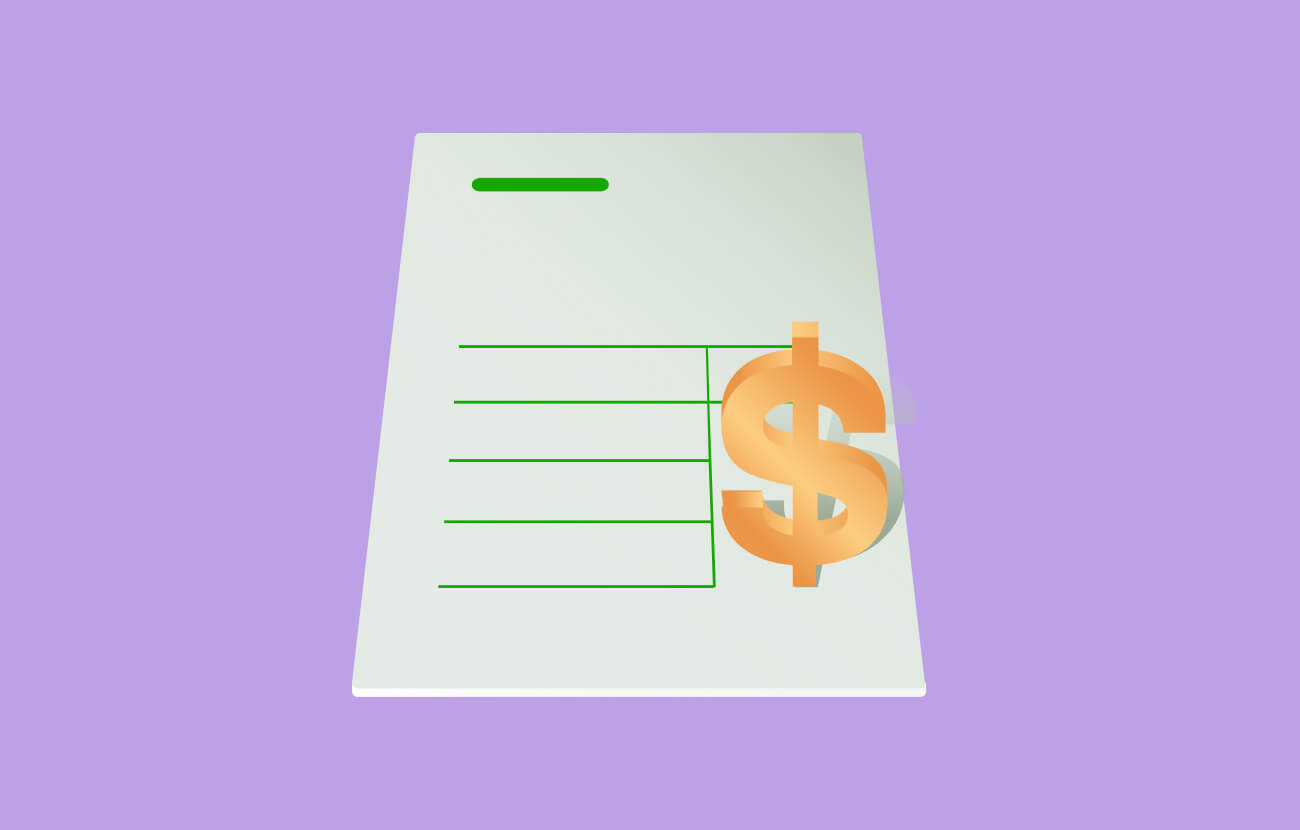Pricing Strategies In Freelancing - Fine-Tuning Your Freelance Rates
Discover optimal pricing strategies in freelancing. From hourly rates to project-based models, master the art of setting fair prices for sustainable success.
Author:James PierceReviewer:Camilo WoodJan 02, 202486 Shares17.1K Views

Freelancing has become an increasingly popular avenue for professionals to showcase their skills and offer services in a flexible and independent manner. One of the critical aspects that freelancers need to master is pricing their services appropriately. Effective pricing strategies in freelancingnot only ensure fair compensation for your expertise but also attract clients and contribute to a sustainable freelancing career.
After determining your freelance digital marketing specialty, the next step is to develop a price plan that will help you win over clients and set you up for success. How do you determine your rates as a freelancer?
What is the ideal approach to set up your hourly rate and payment options, how do you invoice your clients, and how do you guard against nonpaying clients?
The majority of seasoned freelancers will admit that they have priced their services incorrectly numerous times and believe they all know the "best way" to charge for their work, but the truth is that there isn't a "one size fits all" method when it comes to rates and pricing.
However, setting prices appropriately is so crucial that it may be one of the most significant choices you make when starting a business.
You have the freedom to choose how much to charge clients as a freelancer. There's no right or wrong method to charge for your work; there are many different approaches available.
Furthermore, there is no restriction on the number of pricing strategies in freelancing you can employ. Actually, not every client or project is a good fit for every billing method.
A time-based payment plan makes the most sense when the client has continuous needs and the scope of work is not precisely specified. A fixed-price or value-based billing model makes the most sense when the work scope and timeline are well defined.
You have the option of using a single billing method for every client or several separate methods for every project. This could imply that you bill a single client on an hourly basis for one project and a set fee for another.
Understanding The Value You Bring In Freelancing
One of the foundational elements of establishing effective pricing strategies in freelancing is a profound understanding of the value you bring to the table. Your skills, expertise, and unique offerings play a pivotal role in determining how much you should charge for your freelance services.
Begin by identifying your unique value proposition. What sets you apart from other freelancers in your niche? Consider your skills, experience, and any specialized knowledge you possess. Your unique selling points should be the focal point of your pricing strategy.
Clearly articulate the benefits clients receive when they choose your services. Whether it's a faster turnaround time, innovative solutions, or a creative approach, ensuring that clients understand the tangible advantages of working with you sets the stage for fair and justified pricing.
Put yourself in the client's shoes. What problems are you solving for them? How does your expertise contribute to their success or alleviates their pain points? By understanding the client's perspective, you can tailor your pricing to reflect the value they receive.
Trust is a key component of successful freelancing relationships. Demonstrating your value not only builds trust but also establishes credibility. Clients are often willing to pay more for freelancers who consistently deliver value and exceed expectations.
Hourly Rate Vs. Project-Based Pricing
Once you've grasped the value you bring, the next step in crafting effective pricing strategies is deciding between hourly rates and project-based pricing. Each model has its advantages and considerations, and choosing the right one depends on the nature of your work and client expectations.
Hourly Rates
Hourly rates provide a straightforward and transparent way of billing clients. It's a common choice for tasks with clear time requirements, such as consulting, programming, or design work. When opting for hourly rates:
- Transparency -Clients appreciate transparency, knowing exactly how their budget is allocated.
- Flexibility -Hourly rates offer flexibility, especially for projects with evolving requirements.
Project-Based Pricing
Project-based pricing involves quoting a fixed fee for the entire project, regardless of the time spent. This approach offers predictability for both you and the client. Consider project-based pricing for:
- Well-Defined Projects -When the scope and requirements of the project are well-defined.
- Client Budget Concerns -Clients with specific budget constraints often prefer knowing the total cost upfront.
Finding the right balance between hourly and project-based pricing depends on the nature of your freelance work. Some freelancers adopt a hybrid approach, using hourly rates for specific tasks within a project while offering an overall project fee.
Researching Market Rates
Understanding market rates is essential for positioning your freelance services competitively. Researching market rates involves studying industry averages, regional variations, and the rates charged by freelancers with similar skills and experience.
Explore freelancing platforms, industry forums, and online communities to gather insights into prevailing market rates. Many platforms provide data on what freelancers in different fields are charging for their services.
Network with fellow freelancers and professionals in your industry. Conduct surveys or informal interviews to gather information about what your peers charge. Personal connections often provide valuable and candid insights.
When researching market rates, consider your expertise and level of experience. Rates can vary based on the freelancer's skill level, with more experienced professionals often commanding higher fees. Factor in your unique skills and any specialized knowledge that adds value to your services.
Take into account regional variations in cost of living and client budgets. Freelancers in high-cost-of-living areas may need to set higher rates to cover expenses, while those in lower-cost regions should adjust their rates accordingly.
Market rates can fluctuate over time due to changes in demand, technology, or industry trends. Regularly update your knowledge of market rates to ensure that your pricing remains competitive and reflective of industry standards.
Considering Your Expenses In Freelancing Pricing
Setting freelance prices involves more than just determining your skills and value proposition; it requires a keen awareness of your expenses. Understanding and factoring in your costs is crucial for establishing a sustainable and profitable freelancing business.
Calculating Operating Expenses
Start by identifying and calculating your operating expenses. These may include:
- Software and Tools -Expenses related to the software and tools you need to perform your services efficiently.
- Equipment Costs -Consider the cost of any specialized equipment or hardware required for your freelancing work.
- Subscriptions and Memberships -Include fees for memberships, subscriptions, or licenses for professional organizations or platforms.
- Taxes -Factor in taxes, including income tax and any applicable self-employment taxes.
Once you've determined your operating expenses, set minimum profit margins. Your freelance rates should not only cover your costs but also leave room for profit. Failing to account for profit margins can lead to financial instability in the long run.
Beyond direct project-related expenses, consider your overhead costs. These are ongoing expenses that aren't tied to specific projects but are essential for running your freelancing business. Examples include rent, utilities, and insurance.
Freelancing involves administrative tasks such as client communication, invoicing, and marketing. Allocate a portion of your rates to cover the time spent on these essential but non-billable activities.
Factoring In Your Skill Level And Expertise
Your skill level and expertise are integral components of your freelance pricing strategy. Clients often recognize and are willing to pay more for seasoned professionals who bring a higher level of proficiency and experience to the table.
Freelancers should continuously invest in skill development. As you acquire new skills or enhance existing ones, you gain a competitive edge. Adjust your rates to reflect the increased value you bring to clients.
A solid reputation for expertise allows you to command higher rates. Consistently delivering high-quality work, staying updated on industry trends, and showcasing your expertise through a portfolio or testimonials contribute to building this reputation.
Consider the demand for your specific skills in the market. If you possess skills that are in high demand and low supply, you can justify higher rates. Evaluate the uniqueness and relevance of your skill set within your niche.
Creating Tiers Or Packages In Freelance Pricing
Creating tiers or packages is an effective strategy to cater to a diverse client base, accommodate different budgets, and provide clear options for potential clients. This approach enhances flexibility and allows you to showcase the breadth of your services.
Begin by identifying the components of your freelance services. Break down your offerings into distinct elements or features that clients might value individually.
Based on the identified components, create different tiers or packages. Each tier should offer a different level of service, with higher tiers including more features, benefits, or advanced services.
Ensure that each tier aligns with specific client needs. For example, a basic tier might be suitable for small businesses with limited budgets, while a premium tier caters to clients seeking comprehensive solutions.
Transparent communication is key. Clearly communicate the details of each tier, specifying what is included and any limitations. This helps clients make informed decisions and choose the package that best fits their requirements.
Considering Geographic Location In Freelancing Pricing
The geographical location in which you operate as a freelancer plays a significant role in determining your pricing strategy. The cost of living, market demand, and client budgets can vary widely based on location. Understanding and factoring in these geographical considerations is essential for setting competitive and sustainable freelance rates.
One of the primary factors influenced by geographic location is the cost of living. Freelancers in areas with a higher cost of living generally need to set higher rates to cover their expenses adequately. This includes rent, utilities, transportation, and other daily expenses.
Geographic locations can have varying levels of demand for specific services and differing levels of competition among freelancers. In regions with high demand and limited competition, freelancers may have more flexibility in setting higher rates. Conversely, in saturated markets, pricing competition may be more intense.
Clients' budget expectations can be influenced by the economic conditions of their geographic location. Research typical budgets for freelancers in your region and align your rates with what clients are willing to pay. Understanding the local business landscape helps you position your services competitively
Building A Value-Based Pricing Model In Freelancing
A value-based pricing model is centered around the perceived value of your services to the client. Instead of solely considering time and expenses, this approach focuses on the impact and benefits your services bring to the client's business. Implementing a value-based pricing model can lead to more lucrative and mutually beneficial client relationships.
Start by thoroughly understanding the client's needs, goals, and challenges. What specific outcomes are they seeking? How will your services contribute to their success? By aligning your pricing with the value you provide, clients are more likely to see the direct impact of your work on their objectives.
Quantify the value you bring in tangible terms. This could be in the form of increased revenue, time savings, enhanced efficiency, or any other measurable benefit. Expressing the potential impact of your services in concrete terms helps justify higher rates.
Tailor your services to maximize value for the client. Consider additional offerings or personalized solutions that go beyond the basic scope of work. Clients are often willing to pay more for services that are specifically tailored to address their unique challenges.
Engage in collaborative goal-setting with the client. By aligning your objectives with theirs, you create a shared sense of purpose. This collaborative approach builds trust and reinforces the notion that your pricing is directly linked to achieving mutually beneficial outcomes.
Offering Discounts Strategically In Freelance Pricing
Strategic use of discounts can be a powerful tool in your freelance pricing strategy. While discounts can attract clients and foster loyalty, it's essential to implement them strategically to ensure they align with your financial goals and contribute to overall business success.
Identifying Discount Opportunities
Determine specific scenarios where offering discounts makes strategic sense. These opportunities may include:
- Bulk Projects -Offering discounts for clients who commit to larger or multiple projects.
- Repeat Business -Providing loyalty discounts for clients who return for additional services.
- Long-Term Contracts- Implementing discounts for clients who sign long-term contracts or ongoing retainer agreements.
While offering discounts, ensure that your rates remain profitable. Consider the overall impact on your income and factor in any potential increase in workload. Striking a balance between attracting clients with discounts and maintaining profitability is crucial for long-term success.
How To Increase Your Charges?
Rising costs are another issue that freelancers frequently deal with. You might need to discuss a rate increase with your long-term clients if you find that their time is now worth more than it was when you first started working with them.
When raising your prices, bear the following points in mind:
- Price increases during renewals -Await raising your service rates till the end of the contract or renewal period.
- Describe yourself - Inform customers that you have a valid justification for the price increase.
- Warn clients -Don't give a client the next bill by surprise or give them very little time to decide. Rather, notify them in advance of any price increases.
- Maintain coherence - In order to avoid giving them the impression that you are favoring some clients over others, you should raise your fees uniformly.
Pricing Strategies In Freelancing - FAQs
What Are Effective Freelancer Pricing Strategies?
Effective pricing strategies for freelancers involve understanding your value, researching market rates, and considering factors like skill level and expenses.
Is It Better For Freelancers To Charge Hourly Or Project-based Rates?
The choice between hourly and project-based rates depends on the nature of the work. Hourly rates offer transparency, while project-based pricing provides predictability.
How Can Freelancers Build A Value-based Pricing Model?
A value-based pricing model ties rates to the outcomes and benefits clients receive. Freelancers should focus on communicating the unique value they provide in their services.
Do You Charge For Meetings As A Freelancer?
Indeed, without a doubt. Any service or product provision includes communication. Freelancers should include operating expenses in their pricing, just like any other business. Whether you bill by the hour or by the project, make sure to list your expenses and factor in meeting time.
How To Set The Hourly Rate In Freelancing?
To set your hourly rate in freelancing, calculate your desired annual income, accounting for expenses and desired profit. Divide this by the number of billable hours you intend to work per year. Consider your skill level, market rates, and geographic location for competitive pricing. Regularly review and adjust based on experience and market trends.
Conclusion
Mastering pricing strategies in freelancing is a continuous journey. The key is to strike a balance that reflects the value you bring, meets the financial needs of your business, and appeals to your target clients. By understanding your unique selling points, researching market rates, and adopting a flexible and transparent approach, you can establish pricing strategies that contribute to a sustainable and successful freelancing career.
Jump to
Understanding The Value You Bring In Freelancing
Hourly Rate Vs. Project-Based Pricing
Researching Market Rates
Considering Your Expenses In Freelancing Pricing
Factoring In Your Skill Level And Expertise
Creating Tiers Or Packages In Freelance Pricing
Considering Geographic Location In Freelancing Pricing
Building A Value-Based Pricing Model In Freelancing
Offering Discounts Strategically In Freelance Pricing
How To Increase Your Charges?
Pricing Strategies In Freelancing - FAQs
Conclusion

James Pierce
Author

Camilo Wood
Reviewer
Latest Articles
Popular Articles

